“Old MacKrause had a farm...” Bernie Krause and The Great Animal Orchestra at Fondation Cartier
- Christian Hain
- Jul 27, 2016
- 6 min read
Updated: Mar 24, 2020
(Paris.) If by accident you have an inside contact from the secretive circle celebrating Fondation Cartier’s openings, please consider taking the way of the whistleblower and get in touch with this website, discretion guaranteed.
We don’t belong to that circle, and the foundation plainly ignored our email begging for an invitation (come on, still mad about this?). Cartier is not even a branch of LVMH, but owned by its main competitor for the world domination in luxury, Swiss conglomerate Richemont. Tell us, do they receive their guests in a boutique before shuttling them to the show, does everybody get a plastic sac full of diamonds, or on the contrary, is obliged to buy one? Are there actually any openings?
We won’t be kept out so easily, and when we came back to Paris once more in July, we went to see their latest show on a regular day.
A lot of Cartier Foundation’s art exhibitions are excessively crowded, then a huge queue is reaching down Boulevard Raspail in the quiet, residential, south of Paris. You need to show up early, bring a chair, a book/a tablet, and prepare for extensive conversations with your fellow visitors; this could finally be your chance to discuss the comeback of de Broglie-Bohm’s pilot waves into scientific discourse with somebody who has never heard of quantum physics before you handed him a couple of books halfway through he line. Alas, The Big Animal Orchestra is not one of these shows. For once, there is no queue, and you need to keep those reflections to yourself. Which – as much as it will be welcomed by those who visit – is a pity, and completely undeserved: The Big Animal Orchestra is a great show.
Perhaps that tiled wall with cute little birds painted upon in front of the Foundation’s entrance (a work of Adriana Varejão, who is indeed an artist and not a swimming pool designer) is not best suited to attract visitors looking for art. Be assured, it gets better, much better, and soon! Watch out for the plastic bee (no artist information given) trapped inside the double sliding doors but don’t forget to get out and into the building yourself.
You will find low brick walls to sit upon and watch a video on the creation of Cai Guo Qiang’s White Tone – or turn around and admire the work itself: Curved 4x18m that look like cave painting but have been created with exploding gun powder. It hangs on another brick wall specifically installed for the show, a room divider much more solid than simple folding screens. Many will miss it, but if you look behind that wall - if only to search for a trashcan – you discover even more artworks! One of them is a three channel video installation (those become quite popular, don’t you think?), or to be precise: three channel slide show. Ok, it’s actually an unknown number of slideshows running on three separate screens one next to the other. About forty years ago, Japanese photographer Manabu Myozaki invented an automated camera, and the images document different habitats, different scenes of wildlife, from a bear visiting a farm at night to mountains, jungle and snow. Nature’s a bitch, though: One series of images shows a decomposing deer in the woods. An aestheticized version of life and death in the tradition of still-life painting, it stays comparably clean, sterile, clinical; perspective and distance make sure there’s no gore or worms to see.
Cartier Foundation shows even more photos, printed and framed, shot by Myozaki-san’s camera, like the selfie of a bear manipulating it (should be “ungu-pulating” properly speaking). On the opposite side of the entrance, a painting section celebrates outsider art between fake Le Douanier Rousseaus and authentic voodoo, while more films tell about Cornell University’s Lab of Ornithology (so that’s where those bird sounds come from!). And there’s Hiroshi Sugimoto from an early stage of his career when he photographed wolf packs and murders of vultures.
All this is nothing more than a prelude to the main experience downstairs. Down there, hidden in darkness, two installations form the heart of the show. The first one focuses on the adventures of French expedition ship “Tara” and its documenting plankton worldwide. Nine screens on the floor show enlarged microscopic images, it's not strictly “Art”, but impressive nevertheless. Several attendants with flashlights take care that nobody smashes a screen under his feet.
The Big Animal Orchestra by Bernie Krause, the installation that lends its name to the whole exhibition, is waiting next door. After a successful career in early electronic music and movie soundtrack production in the 1960s and 70s, Mr Krause got himself a PhD in bioacoustics and has been travelling the world to record the sounds of nature ever since. His acoustic portraits – “soundscapes” - offer unique insights into the respective ecosystem. At Cartier Foundation, an interview with Krause is followed by nine recordings of different habitats, and maybe these parts are five minutes too long each (the entire experience will take you over an hour, we did not stay that long. Few will). Occasionally white noise drowns out green nature – the technique has its faults. The political aspects become apparent in before/after scenarios that document the silencing effects of human intrusion. The rest is documentation, immersion, bathing in sound, and many a Cartier customer will happily shout out, “Hear that? That’s my coat, doing that noise!”. Or whisper to their diadems and rings, “See, that’s your homeland, that’s where you come from, remember it, my precious?”
On the visual side, the installation invests three walls with a moving projection of sound graphs and accompanying information; all in green, it looks a lot like The Matrix. Sound waves wander along the wall whilst patrons squat on cushions and seats. En passant, The Big Animal Orchestra destroys a popular stereotype: We city people often long for nature for its supposed promise of silence, mistaking a well maintained municipal park for the wild. The reality is all but quiet, in nature calm means dead. A jungle is a metropolis, as noisy as NYC or Paris. Oceans are the exception, the only recordings Bernie Krause has condensed because there is never enough noise (he likes noise, prefers it to silence, as long as it’s not manmade.) It seems, as if manmade noise is per se defined as “unnatural”, which could be problematic, as all we do is (our) nature too, even destroying it. There could also be the danger of too much romanticising, for the animals it’s not exactly fun living where every step may be mortal. But liberty beats security.
Outside, in the Foundation’s tame gardens you will find a work by Agnes Varda, a mausoleum for her deceased cat. We observed a fly dancing on the grave, potentially remembering a great feast. Back at Metro station Denfert-Rochereau, there finally was a queue, but those people did not wait for Cartier, they were standing at the entrance to the Paris catacombs. Cold bones, the leftovers of a predator’s meal, cannot possibly be more interesting than The Great Animal Orchestra!
P.S.: Two weeks ago, on the parking lot of a public swimming pool, we bumped into a group of people attentively staring at the bushes. Stopping, we realised it was a limping rabbit with half his face bitten away, the right eye closed in bloody eczema; he looked meagre and stumbled straight towards us, only correcting his course at the last instant. He hopped slowly, and finally disappeared in the undergrowth. We stood by with the others, even mumbled something like “animal welfare”, we had come there with public transport, we did not think of our backpack, the towels, and even if we had, where could we have brought him to, it was after seven p.m., all veterinarians closed, and we certainly don’t have a rabbit hutch or anything that could serve for a rabbit hutch in our flat. As usual, we reassured ourselves, “at least we thought of helping”, “at least we have a bad conscience”, “we love foxes, this is their grocery store”.
When we returned two days later, it was raining. The pool was empty, hardly any humans around except the regulars. We counted at least twenty rabbits on the lawn, they seemed comfortable, unimpressed by the few, munching on the grass, young ones, old ones, all well nourished, all perfectly at ease, at home. All looked alike.
We did not see that veteran. But is there not a chance he made it, he lived with them, he knew the lawn? We never saw them before, we were afraid of looking too hard in their direction, or to say anything, but we are sure they were real. We remembered how many years ago we walked past a nest on the road outside our apartment block, blind chicks stumbled around; when we came back their remains stuck to the asphalt. There was no noise.
“Well, Wartsmagazine, thanks for sharing that. Now anybody else has something he wants to talk about?”
The Great Animal Orchestra, 02 July 2016-08January 2017, Fondation Cartier
World of Arts Magazine - Contemporary Art Criticism

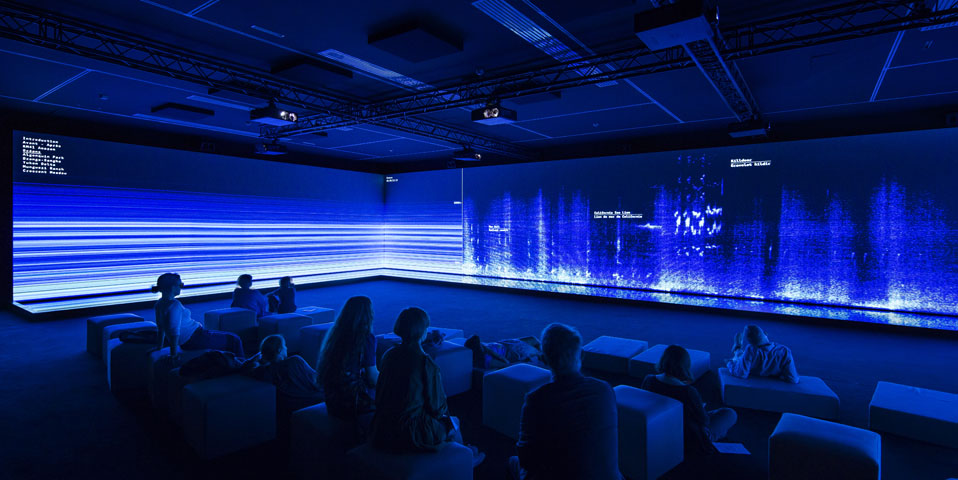

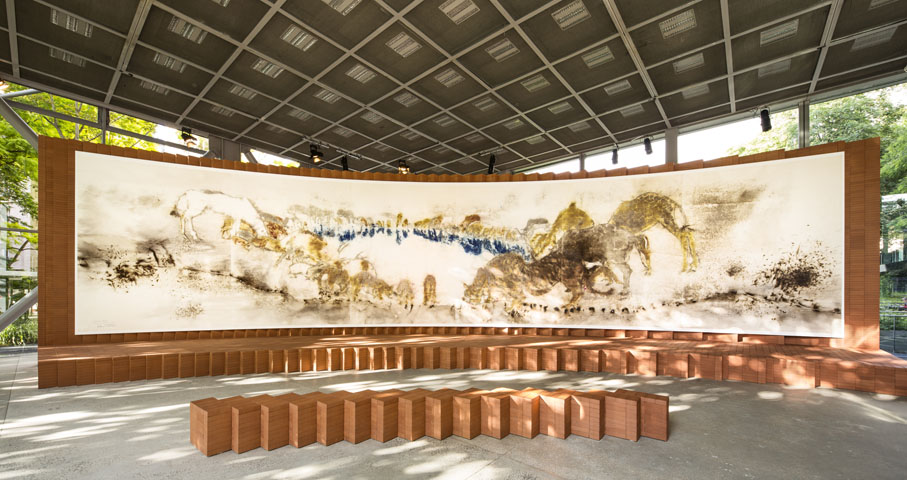

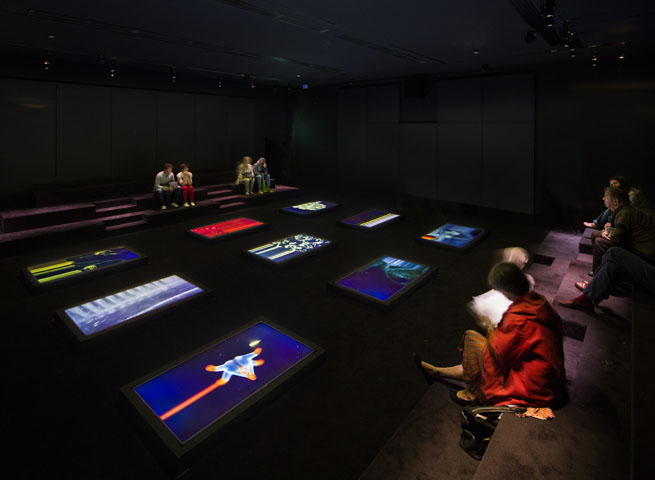

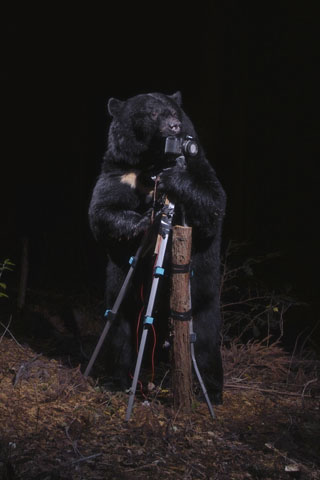

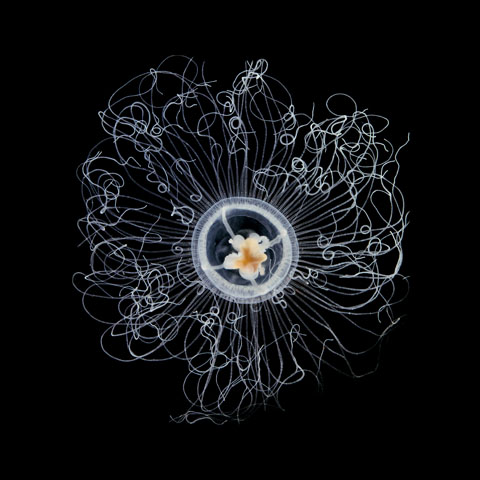
Comments